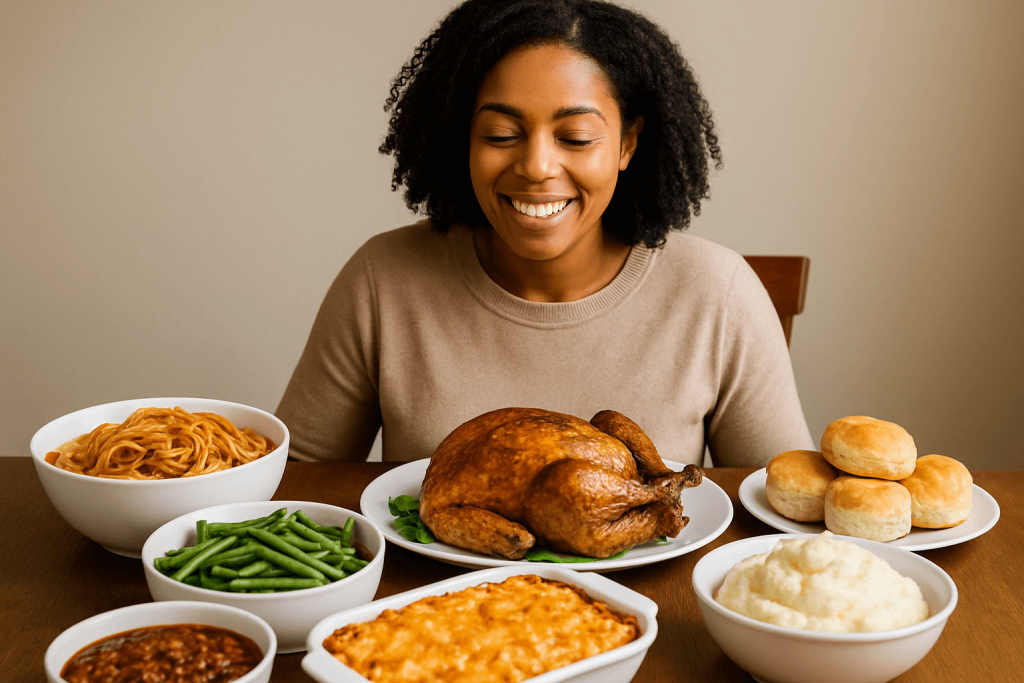Comfort foods have a powerful way of bringing people together. Whether it’s a cozy Sunday dinner with family, a potluck with friends, or a dish passed down through generations, comfort food offers emotional warmth and satisfaction. These dishes go beyond just taste — they carry memories, culture, and connection. They vary from region to region, yet they share one common goal: to make us feel at home.
What Makes a Food “Comforting”?
Comfort food is often tied to childhood memories, cultural roots, or meaningful life events. It usually includes meals that are hearty, flavorful, and familiar. Think of foods like mac and cheese, fried chicken, casseroles, or fresh-baked bread. These aren't just meals; they're experiences that many people associate with warmth, love, and nostalgia.
These foods are typically rich in carbohydrates or fats, which can trigger the release of feel-good chemicals like dopamine. The simplicity and warmth of these meals make them perfect for lifting spirits and bringing people closer during gatherings or tough times.
Popular Comfort Foods Around the World
Every culture has its own version of comfort food. Here are some popular examples:
- United States: Macaroni and cheese, fried chicken, mashed potatoes
- Italy: Pasta dishes like lasagna or spaghetti carbonara
- India: Butter chicken, biryani, lentil dal with rice
- Mexico: Enchiladas, tamales, pozole
- Japan: Ramen, curry rice, tonkatsu
- Korea: Kimchi stew (kimchi jjigae), bibimbap
Types of Comfort Foods and How They Bring People Together
Comfort foods can be divided into several categories. Each type has unique benefits in terms of taste and its ability to bring people together:
1. Baked Comfort Foods
Items like casseroles, baked pasta, and pot pies fall under this category. They are often served in large portions, making them perfect for sharing at family dinners or potluck events. They’re easy to make in big batches, and everyone can dig in together.
2. Hearty Soups and Stews
Soups like chicken noodle or beef stew provide warmth and nourishment. They’re perfect for cold weather or times of illness. People often make large pots of soup to share with loved ones, making this a strong bonding food.
3. Fried Favorites
Fried chicken, mozzarella sticks, onion rings, and donut holes are popular fried comfort foods. Though not the healthiest options, they’re full of flavor and perfect for parties and casual get-togethers. Sharing fried snacks over a movie or sports game is a fun social experience.
4. Desserts and Baked Goods
Desserts like brownies, chocolate chip cookies, banana bread, and apple pie satisfy sweet cravings and are often tied to celebrations. These treats are frequently made for birthdays or other major events, bringing people happiness with every bite.
Comfort Food Products and Services
In today’s market, many companies offer ready-made comfort foods or kits to help people prepare their favorite dishes at home. You don’t always have to make everything from scratch to enjoy the benefits of comfort food.
Meal Delivery Services
Meal kits like HelloFresh and Blue Apron often include classic dishes like meatloaf, baked pasta, or creamy soups. These services provide all the ingredients you need, making it easier for families to cook together.
Price Range: Typically $9 to $13 per serving depending on subscription level and frequency.
Frozen Meals and Grocery Options
Brands like Stouffer’s, Amy’s, and Marie Callender’s offer frozen lasagna, mac and cheese, pot pies, and more. These are great for quick meals at home and can still give that familiar comfort food feeling without too much prep time.
Price Range: Between $3 and $8 for a single frozen meal, depending on brand and portion size.
Comfort Food Restaurants
Many restaurants specialize in comfort food. Diners, Southern-style cafes, and Italian family eateries are all known for their hearty menus. Chains like Cracker Barrel, Boston Market, and even Panera Bread offer meals that remind people of home-cooked food.
Price Range: Entrees usually range from $10 to $20 per person, depending on the location and dish.
Healthier Comfort Food Alternatives
Comfort food doesn’t always have to mean unhealthy. More people are finding ways to make lighter versions of their favorite dishes. Swapping ingredients can make meals better for daily consumption while keeping them satisfying.
- Using cauliflower mash instead of mashed potatoes
- Air frying instead of deep frying
- Baking with whole wheat flour or almond flour in desserts
- Swapping full-fat dairy with Greek yogurt in recipes
These modifications make it easier to enjoy favorite meals without ignoring health goals. Cookbooks and websites like Skinnytaste and EatingWell offer hundreds of comfort food recipes with a healthy twist.
Benefits of Sharing Comfort Foods
Comfort food isn’t just about satisfying hunger. It plays an emotional and social role in people’s lives. Here are some key benefits:
- Emotional Wellness: The familiar tastes and smells of comfort food can reduce stress and lift mood.
- Social Bonding: Sharing a favorite dish can help build relationships, create memories, and celebrate traditions.
- Easy Cooking: Many comfort food recipes are simple, which makes cooking with kids or inexperienced cooks enjoyable.
- Nostalgia: These foods often remind people of parents, grandparents, or cultural heritage, making them even more special.
Conclusion: A Table That Welcomes Everyone
Comfort foods are more than just meals — they are ways to show love, remember the past, and connect with others. Whether you enjoy homemade mac and cheese, spicy curry, or a slice of warm pie, these dishes have a universal power to bring happiness and build community. Thanks to convenient services and healthier food swaps, it's easy to keep comfort food a regular part of life.
Sources:
- “What Is Comfort Food? – Psychology Today”
- “The Science of Comfort Food – Time Magazine”
- “Top Comfort Foods Around the World – TasteAtlas”
- “Healthy Twists on Classic Comfort Foods – Skinnytaste”
- “Best Meal Kit Delivery Services – Consumer Reports”
